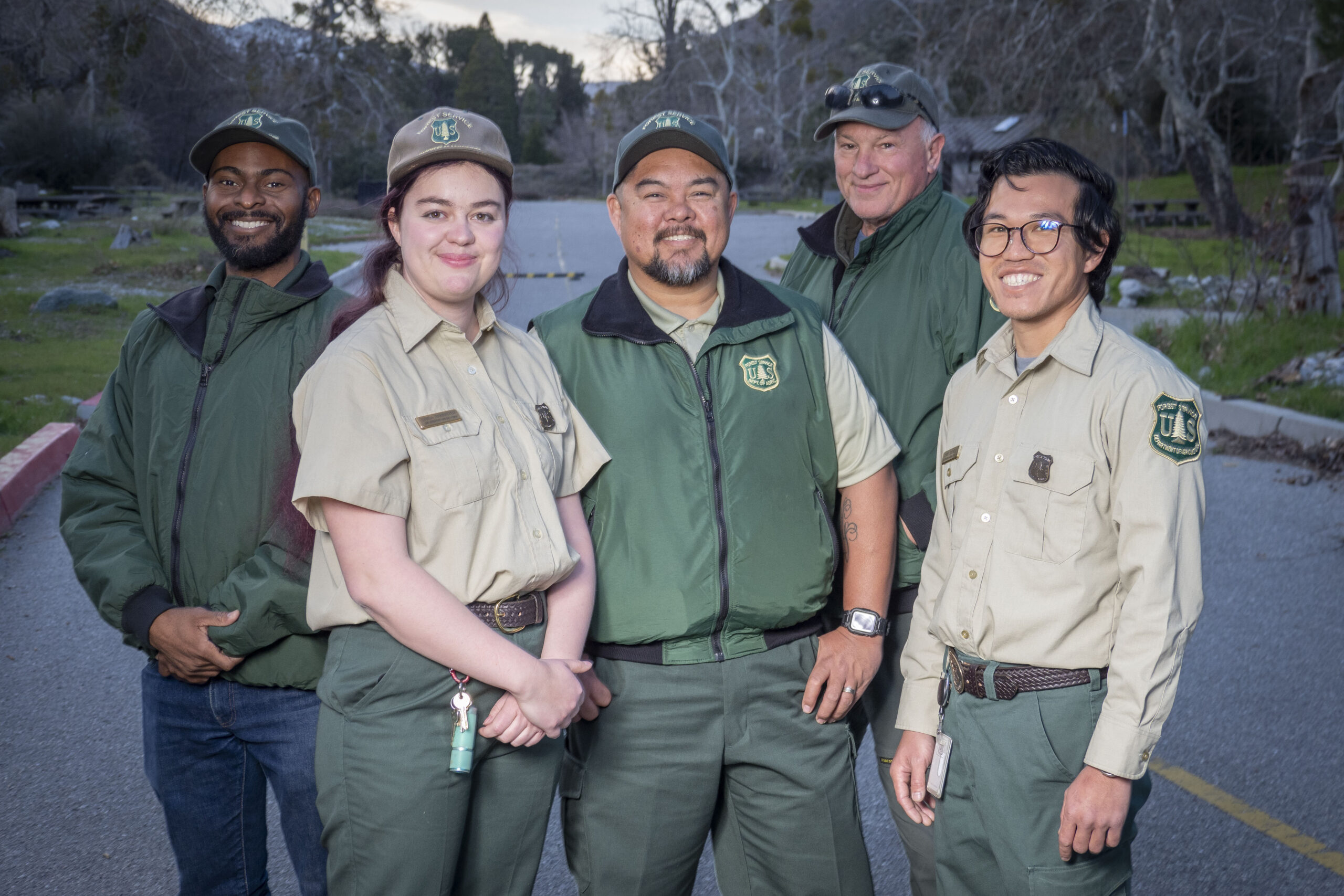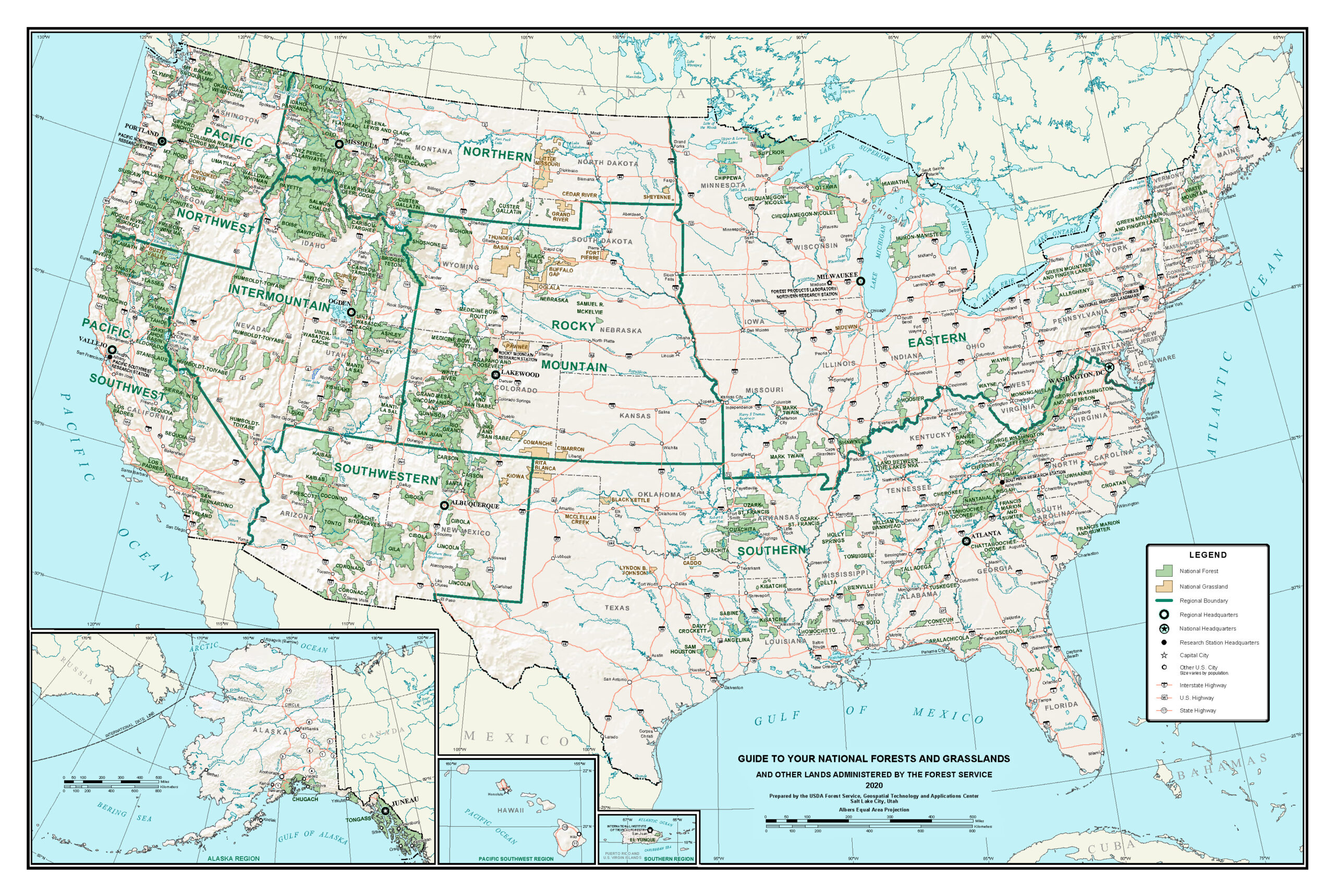Most of us imagine forests as tree-filled respites with meandering trails and welcome shade.
Yet forests are also fragile ecosystems, buffeted by extreme climate, severe weather and natural disasters. The USDA Forest Service monitors the stresses that affect our forests, finding ways to maintain the health and diversity of their animal and plant species.
The Forest Service welcomes people to enjoy public lands for recreation, and their visits provide an important economic boost for nearby communities. In addition to plentiful untamed wilderness, the agency maintains trails and waterways for safe and accessible public use, funded in part by the fees it sets and collects. Beyond recreation, the agency also coordinates the sale of renewable resources that come from the forests. This includes timber and firewood for building and heating homes, medicinal herbs, and fruits and nuts.
The agency’s mission is to introduce people to the nation’s forests—and grasslands, equally important terrain that provides protected habitat for endangered species.
To sustain the beauty and vitality of our nation’s forests and grasslands for the future, the agency is looking for the next generation to join its ranks. Do you care for people and the planet alike, and have knowledge of the natural world and a passion for public service? Then keep reading.

The forests belong to us all
The Forest Service also seeks to become more inclusive, widening the circle of people who use public land, do business with the agency, and join its workforce. In addition to managing land, individuals the agency hires have the opportunity to work on strengthening relationships with tribal nations, promoting the advancement of civil rights and more. Learn more about the agency’s priorities on equity here.
As of March 2023, one-third of the agency’s senior leaders identified as a member of a racial minority, including the chief and deputy chief, the top two agency positions. Additionally, nearly 60% of the agency’s leaders reported high school as their highest level of education, and more than 10% reported a disability.
Geography and history
The Forest Service manages 154 national forests and 20 national grasslands that span 42 states. Those lands total 193 million acres, or about the size of Texas. There’s a lot of land—and a lot of jobs—across the agency’s 10 regions.

Learn about career opportunities on these pages. But we also invite you to visit your national forests and grasslands. Discover what makes them unique. Click here to find your closest forest, and here to better understand the many ways forests are used and what distinguishes them from national parks.
Accomplishments
Below is a rundown of the Forest Service’s many major accomplishments since 1905, when President Theodore Roosevelt established the agency.
- 1910: The Forest Service gains national recognition for its response to the Great Fire of 1910.
- 1933-1942: During the Great Depression and New Deal, the Forest Service becomes a major partner of the Civilian Conservation Corps, which provided jobs to unemployed men aged 18-25 at a time of rampant unemployment. Today, the Forest Service continues to provide work relief for qualified young people through the agency’s Job Corps program.
- 1966: Congress authorizes the Forest Service to establish a National Heritage Program to protect American cultural heritage, particularly Native American cultural heritage, on national forests and grasslands.
- 2007: Gail Kimball becomes the first woman to take office as chief of the Forest Service.
- 2019: The Forest Service adopts the Shared Stewardship national strategy, emphasizing partnerships with state and tribal governments on issues including droughts, fires and invasive species.
- 2020: The worst wildfire season in American history hits the Western U.S., particularly in California. Larger and deadlier wildfire seasons influenced by climate change have led the Forest Service to adopt new strategies for fire prevention.
- 2022: The Forest Service creates and adopts its first Climate Adaptation Plan, providing an official roadmap for the agency to protect National Forests and Grasslands from the impact of climate change. Strategies endorsed in the report include creating forest vulnerability assessments, carbon management strategies, and new tools and data resources to examine forest health.
- 2024: The Forest Service will celebrate wildfire prevention mascot Smokey Bear’s 80th birthday. Smokey is the face of the longest-running public service announcement campaign in American history, with an almost 80% rate of name recognition among outdoor enthusiasts, according to the Ad Council.
Today, the Forest Service has more than 30,000 employees and is headed by Chief Randy Moore, who brings 45 years of agency experience to the role. Consider joining the team!
